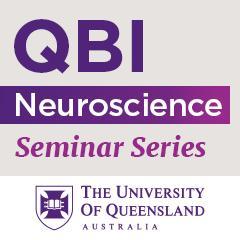Postprandial Sensing of Nutrient through Microbiome-Gut-Brain Axis in Flies and Mice

Speaker: Assistant Professor Greg Seong-Bae Suh
NYU School of Medicine, USA
Korea Advanced Institute of Science & Technology, South Korea
Title: Postprandial Sensing of Nutrient through Microbiome-Gut-Brain Axis in Flies and Mice
Abstract: Glucose-sensing neurons regulate neuronal activity in response to glucose or its metabolite. According to glucostatic hypothesis proposed by Jean Mayer in 1953, feeding is regulated by neurons in the brain that sense glucose levels in the blood. Despite of subsequent discovery of glucose-sensing neurons through electrophysiological approaches by Oomura et al (1964), the physiological role of glucose sensing in feeding or any related event remains unclear. I will discuss two types of glucose-sensing neurons: 1) a population that mediates carbohydrate consumption in animals – flies (Oh et al, 2021; Dus et al, 2015) and mice (Kim et al, 2019; Kim et al, manuscript under review, 2) a population that communicates with endocrine organs and regulates the release of insulin and glucagon in flies (Oh et al, 2019). Its implication in mammals will be discussed. In addition to glucose-sensing neurons, we recently determined the identity of interoceptive sensing cells in the gut that responds to the deprivation of essential amino acids, another key macronutrient (Kim and Kanai et al., 2021). We have also embarked on a study to understand postprandial sensing of sodium by the gut and will discuss the mechanism by which deprived animals respond to ingested sodium (Kim et al, 2024).
Reference:
Dus M., Lai J., Gunapala KM, Min S, Taylor TD, Hergarden AC, Geraud E., Joseph CM, Suh Greg S. (2015). Nutrient Sensor in the Brain directs the action of the Brain-Gut Axis in Drosophila. Neuron 87, 139-151
Kim BS, Hwang G, Yoon SE, Kuang M, Wang JW, Kim YJ, Suh, Greg S (2024) Postprandial Sodium Sensing by enteric neurons in Drosophila. Manuscript in press, Nature Metabolism.
Kim B#, Kanai MI#, Oh Y, Kyung M, Lee JH, Suh, Greg S* Lee WJ* (2021) Response of the Drosophila microbiome-gut-brain axis to amino acid deficit. Nature 593, 570-574. # and * equally contributed.
Kim J, Lee S, Fang Y, Bhat S, Shin A, Hashikawa K, Kim D, Sohn J, Lin D, Suh, Greg S (2019) Rapid, biphasic CRF neuronal responses encode positive and negative valence. Nature Neuroscience 22, 576-586
Oh Y, Lai JSY, Mills H, Erdjument-Bromage H, Giammarinaro B, Saadipour K, Wang J, Park J, Abu F, Neubert TA, Suh, Greg S. (2019) A glucose-excited neuron pair regulates insulin and glucagon in Drosophila. Nature 574, 559-564.
Oh Y, Lai JSY, Min S, Liberles SD, Ryoo HD and Suh, Greg S (2021) Two independent signals from the periphery, glucose loads and piezo-mediated gut stretch, regulate the Drosophila nutrient sensor. Neuron 109: 1979-1999
Oomura, Y., Kimura, K., Ooyama, H., Maeno, T., Iki, M., and Kuniyoshi, M. (1964). Reciprocal activities of the ventromedial and lateral hypothalamic areas of cats. Science 143, 484–485.
About Neuroscience Seminars
Neuroscience seminars at the QBI play a major role in the advancement of neuroscience in the Asia-Pacific region. The primary goal of these seminars is to promote excellence in neuroscience through the exchange of ideas, establishing new collaborations and augmenting partnerships already in place.
Seminars in the QBI Auditorium on Level 7 are held on Wednesdays at 12-1pm, which are sometimes simulcast on Zoom (with approval from the speaker). We also occassionally hold seminars from international speakers via Zoom. The days and times of these seminars will vary depending on the time zone of the speaker. Please see each seminar listed below for details.


